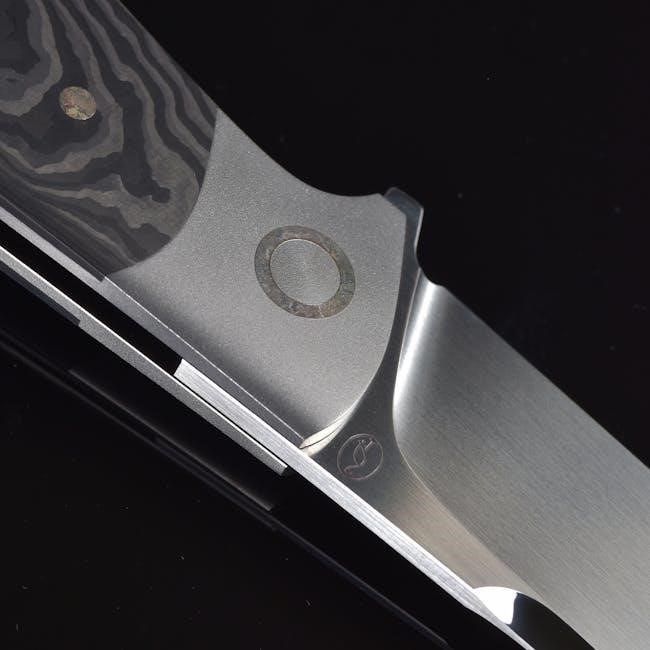Knife sharpening angles are crucial for achieving a razor-sharp edge, balancing sharpness and durability. The angle between the blade and sharpening tool determines the edge’s effectiveness. Proper techniques and tools, like angle guides, ensure consistency and precision, making the process easier for both beginners and experts. Understanding how to choose and maintain the right angle is essential for optimal results.
1.1 Understanding the Importance of Sharpening Angles
Sharpening angles directly impact a knife’s performance, determining its sharpness and durability. A steeper angle creates a sharper edge but makes it more prone to chipping, while a shallower angle results in a more durable blade. The right angle depends on the knife’s steel hardness, blade thickness, and intended use; Maintaining the correct angle ensures optimal cutting efficiency and extends the knife’s lifespan, making it essential to understand and master this fundamental aspect of knife sharpening.
1.2 Overview of Common Sharpening Techniques
Common sharpening techniques include using manual stones, electric sharpeners, and precision honing guides. Manual stones offer control but require skill, while electric sharpeners provide convenience and speed. Honing guides ensure consistent angles, ideal for maintaining edge geometry. Angle guides are particularly useful, helping users achieve precise angles without prior experience. These methods cater to different preferences and skill levels, ensuring effective sharpening for various knife types and uses. Each technique emphasizes maintaining the correct angle for optimal results.
Factors Determining the Best Sharpening Angle
Steel hardness, blade thickness, and intended use are key factors in choosing the best sharpening angle. Harder steels need steeper angles for sharpness, while thicker blades require shallower angles for durability. User preference also plays a role in selecting the optimal angle, ensuring the knife performs as desired.
2.1 Steel Hardness and Its Impact on Angle Selection
Steel hardness significantly influences the choice of sharpening angle. Harder steels, typically found in high-end knives, require steeper angles to maintain sharpness and prevent chipping. Softer steels, common in durable knives, benefit from shallower angles for edge retention. Adjusting the angle based on steel type ensures optimal performance, balancing sharpness and durability for specific tasks. Proper angle selection enhances the knife’s effectiveness and extends its lifespan. This balance is critical for achieving the desired cutting edge.
2.2 Blade Thickness and Its Role in Choosing the Angle
Blade thickness plays a key role in determining the optimal sharpening angle. Thicker blades typically require a shallower angle to maintain strength and durability, while thinner blades can accommodate steeper angles for sharper edges. The angle must balance the blade’s thickness with its intended use, ensuring both sharpness and resilience. Maintaining consistency in angle selection is crucial for achieving the desired edge quality and longevity of the knife. Proper angle adjustment based on blade thickness ensures optimal performance for various tasks.
2.3 User Preference and Intended Use of the Knife
User preference and the knife’s intended use significantly influence the sharpening angle. For instance, chefs may favor a sharper edge with a steeper angle for precision cutting, while outdoor enthusiasts might opt for a more durable edge with a shallower angle for rugged tasks. Personal preference also plays a role, as some users prioritize ease of maintenance over extreme sharpness. Aligning the sharpening angle with the knife’s purpose ensures it performs optimally for its specific application, whether in the kitchen or the field.
Optimal Sharpening Angles for Different Knife Types
Chef knives typically use 15-20° angles for sharpness, while pocket knives prefer 20° for durability. Japanese knives often use lower angles, like 15°, for precision cutting. Serrated knives generally maintain a 20° angle for their unique edges. Each type requires specific sharpening techniques to enhance performance and longevity.
3.1 Chef Knives and Kitchen Cutlery
Chef knives and kitchen cutlery typically require a sharpening angle of 15-20° per side, combining sharpness and durability. Thicker blades may benefit from slightly wider angles for robustness, while thinner blades prefer narrower angles for precision. The angle choice depends on the knife’s steel hardness and intended use. Using angle guides ensures consistency, especially for maintaining the edge geometry. Proper sharpening at these angles enhances cutting efficiency and prolongs the knife’s lifespan, making it ideal for daily kitchen tasks.
3.2 Pocket Knives and Folding Blades
Pocket knives and folding blades are best sharpened at a 20° angle per side for optimal balance between sharpness and durability. This angle ensures the blade remains robust for everyday tasks while maintaining a sharp edge. For smaller or thinner folding knives, a slightly narrower angle, around 18°, may be preferred to avoid excessive fragility. Using angle guides helps maintain consistency, especially for beginners, ensuring the knife performs well in various situations without compromising its portability or practicality.

3.3 Japanese and Serrated Knives
Japanese knives, known for their precision, typically use a 15° angle for sharpness, ideal for slicing and delicate cuts. Serrated knives require careful maintenance, often at a 20° angle, to preserve their unique edge. Specialized tools, like diamond stones, help navigate serrations without damage, ensuring effectiveness in tasks requiring a sawing motion. These angles and techniques keep Japanese and serrated knives performing optimally, maintaining their intended functionality and edge quality.

How to Choose the Right Sharpening Angle
Selecting the right angle involves considering the knife’s intended use, steel type, and blade thickness. Use angle guides or precision tools to maintain consistency and accuracy.
4.1 Determining the Angle Based on Knife Design
Determining the sharpening angle starts with understanding the knife’s design. Thicker blades require shallower angles for durability, while thinner blades benefit from steeper angles for sharpness. For chef knives, a 20-degree angle per side is common, producing a versatile edge. Pocket knives often use a 17-20 degree angle for balance. Japanese knives may use a 15-degree angle for precision. Adjustments can be made based on steel hardness and intended use, ensuring the angle aligns with the knife’s purpose and material characteristics.
4.2 Maintaining Consistency in Sharpening
Maintaining consistency is key to effective sharpening. Using angle guides ensures the blade is held at the same angle throughout the process. Novices benefit from these tools to prevent errors. Experienced sharpeners can develop muscle memory over time. Consistency ensures an even edge, enhancing the knife’s performance. Regular practice and attention to detail help achieve repeatable results, making sharpening more efficient and reliable for all skill levels. This consistency is vital for maintaining a sharp, durable edge on any knife.
4.3 Using Angle Guides and Precision Tools
Angle guides and precision tools are essential for achieving precise sharpening angles. These tools help maintain the correct angle consistently, preventing mistakes. Manual sharpeners with adjustable guides offer control, while electric sharpeners feature preset angles for ease. Precision honing guides are ideal for experts, ensuring exact blade geometry. Tools like the Müeller 4-Stage Diamond Sharpener and Wedgek AGM provide versatility, allowing adjustments from 10 to 20 degrees. Using these tools ensures a sharp, durable edge tailored to the knife’s intended use and design.

Tools and Techniques for Achieving the Perfect Angle
This section explores essential tools and techniques for precise angle control. Discover how angle guides, sharpening stones, and electric sharpeners help master and maintain the perfect edge effortlessly.
5.1 Manual Sharpening Stones and Angle Guides

Manual sharpening stones paired with angle guides offer precise control over the sharpening process. These tools allow users to maintain consistent angles, ensuring even edge wear. Angle guides prevent the knife from slipping, reducing the risk of damage. Spring-loaded designs grip the blade securely, while adjustable models accommodate various blade types. Ceramic skates and diamond stones enhance sharpening efficiency. For beginners, angle guides simplify achieving the perfect edge, while experienced users appreciate the versatility. This combination is ideal for mastering manual sharpening techniques and maintaining razor-sharp blades with ease and precision.
5.2 Electric Sharpeners with Adjustable Angles
Electric sharpeners with adjustable angles provide ease and precision for sharpening knives. These tools feature angle adjustment knobs and guides, allowing users to customize the sharpening process. Models like the Müeller 4-Stage Diamond Sharpener and ChefsChoice eXact-V Diamond Hone offer advanced features such as spring-loaded blades and spherical bearings for consistent results. Electric sharpeners are ideal for beginners, as they simplify maintaining the correct angle. They also cater to experts, offering versatility for various blade types. These devices combine speed and precision, making knife sharpening efficient and effortless.
5.3 Precision Honing Guides for Expert Results
Precision honing guides are essential tools for achieving expert-level sharpness. These guides ensure consistent angles, allowing for precise control over the sharpening process. Models like the Wedgek AGM and Tormek T-1 feature adjustable angles, catering to various blade types. They offer stackable guides for increased angle options, up to 39 degrees. Ceramic skates and spherical bearings enhance smoothness, while angle adjustment scales provide accuracy. These tools are ideal for professionals and enthusiasts seeking razor-sharp edges, ensuring optimal results with minimal effort and maximum precision;
Mastering knife sharpening angles ensures sharper, more durable blades. Consistent techniques and precision tools like angle guides are key to achieving expert results and maintaining optimal edge performance.
6.1 Summary of Key Points
Knife sharpening angles are vital for achieving sharp, durable edges. Factors like steel hardness, blade thickness, and intended use guide angle selection. Tools such as angle guides, electric sharpeners, and honing guides enhance precision. Maintaining consistency ensures optimal results. For kitchen knives, angles range from 15° to 20°, while pocket knives often use 20° per side. Japanese knives may require shallower angles. Mastering these principles and using the right tools leads to razor-sharp edges tailored to specific tasks, ensuring peak performance and longevity for your blades;
6.2 Final Tips for Mastering Sharpening Angles
Mastering sharpening angles requires patience and practice. Start with coarse grits and progress to finer ones for polished edges. Use angle guides to maintain consistency, especially for beginners. Inspect the blade regularly to ensure even wear. Sharpen in one direction only, following the knife’s original edge angle. Store tools properly to avoid damage. Experiment with different techniques and tools to find what works best for you. With dedication, you’ll achieve razor-sharp results tailored to your knife’s intended use and design.

